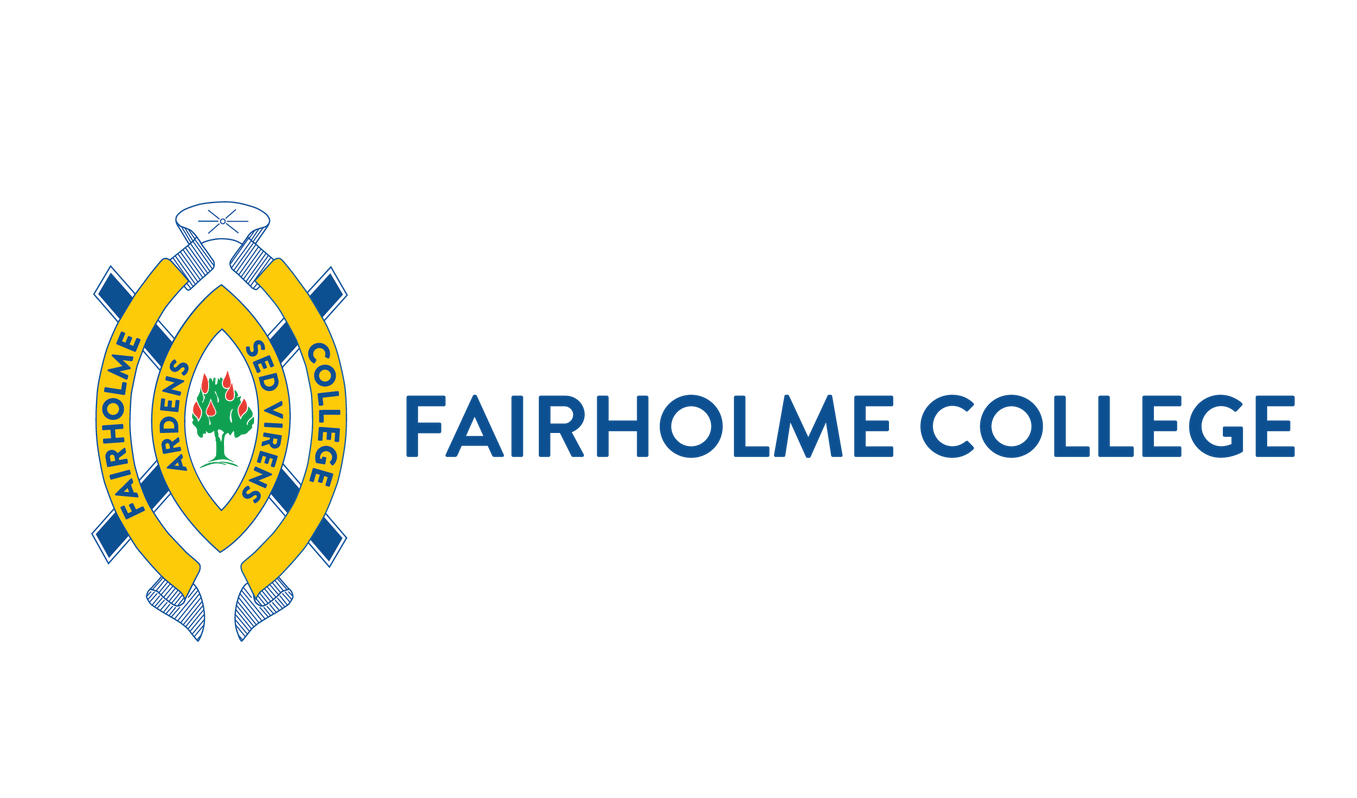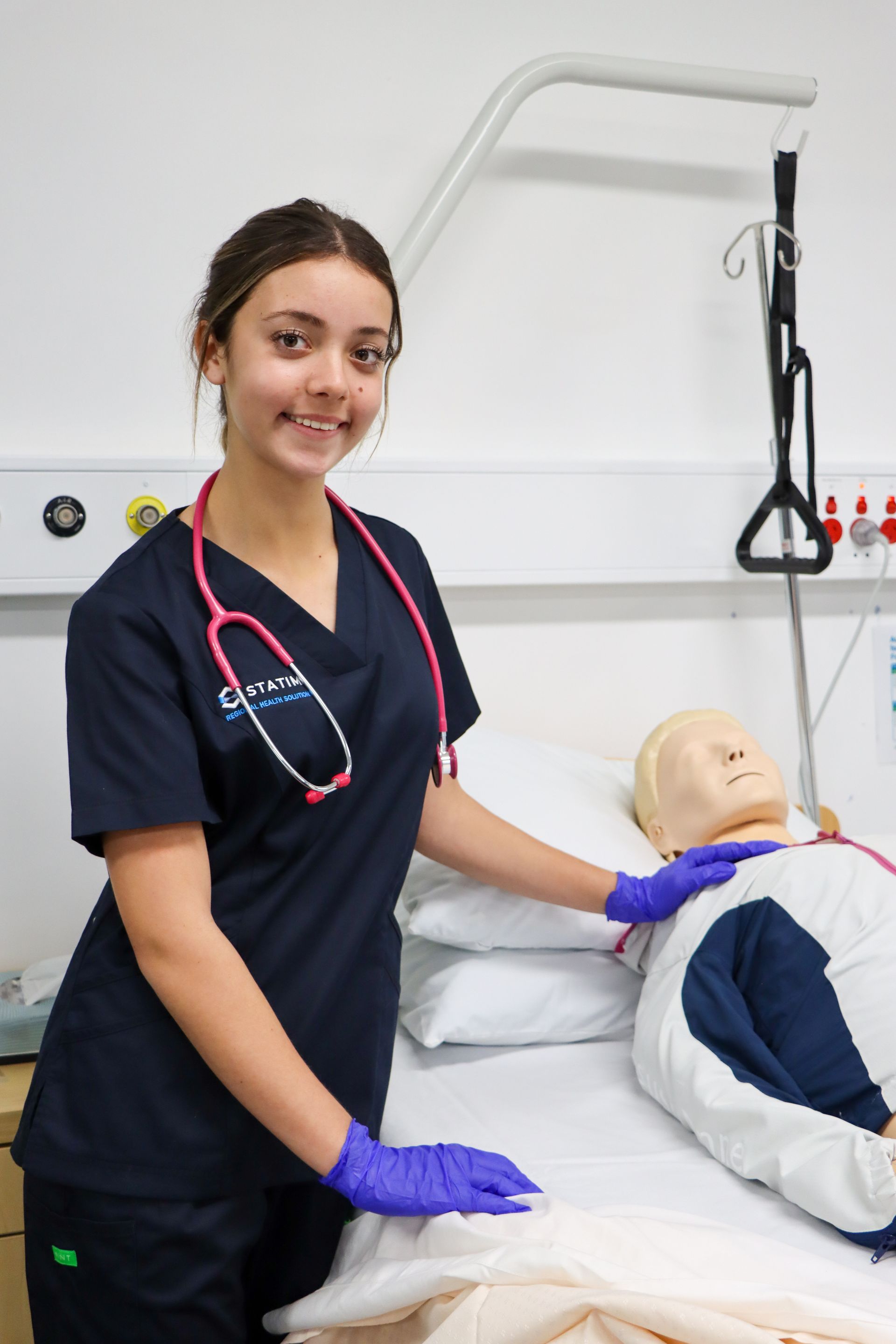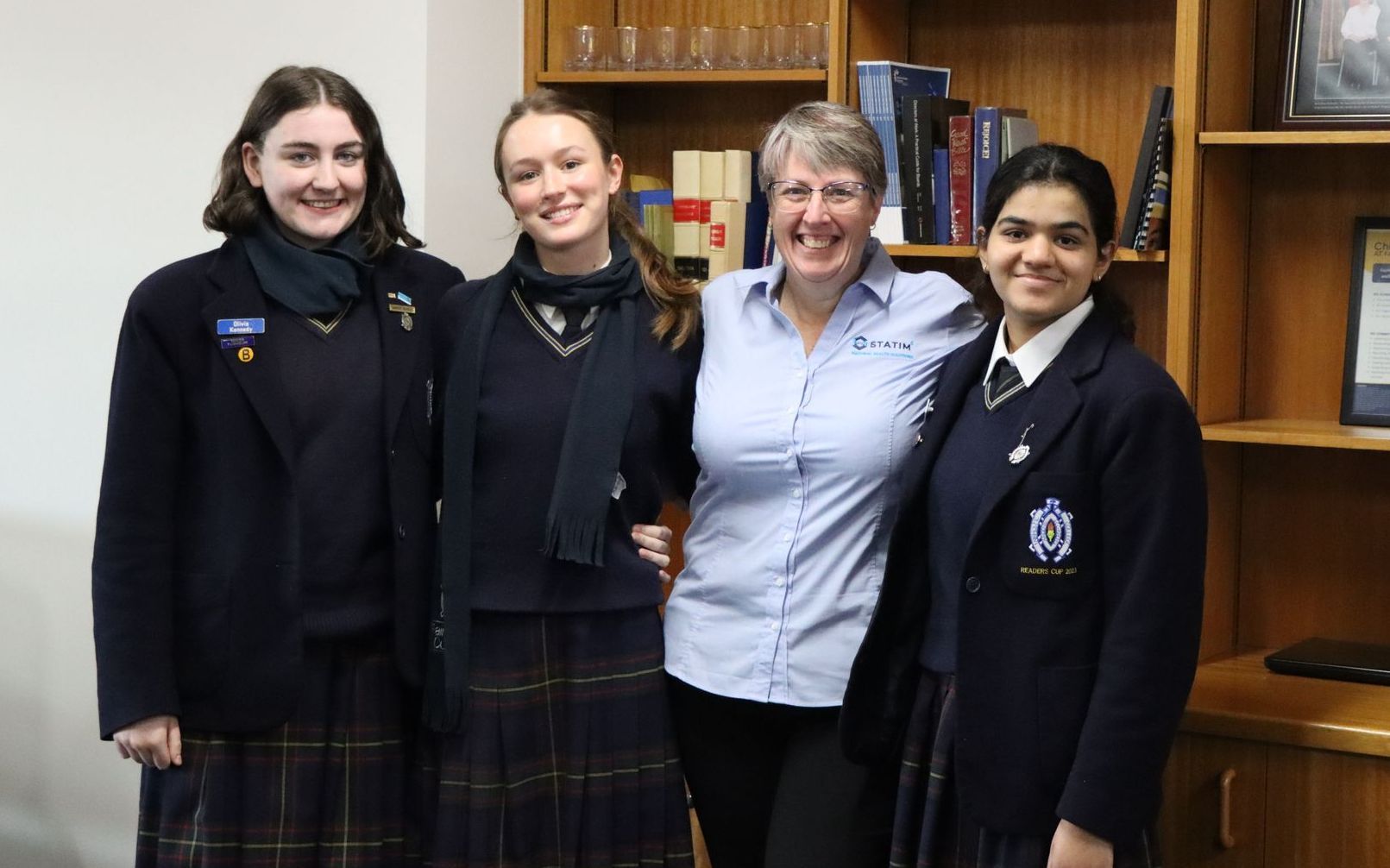Finding Her Calling: Sophie Byatt
June 20, 2025
To find your calling in life—and to feel a deep connection to a vocation—is a special thing. For Sophie Byatt, that calling has always been clear: she knew from a young age that she wanted to care for and serve others.
A career in healthcare is calling her.
Now in Year 11, Sophie is undertaking the Health Services Advanced Pathway Program through Fairholme’s Health Hub—a fully equipped, on-campus simulated hospital ward with an Allied Health station.
The Fairholme Health Hub is a unique offering in skilling our next generation of health professionals. For girls like Sophie, it has provided the opportunity to learn and explore a job in healthcare in real time.
After successfully completing Certificates II and III in Health Support Services, Sophie has enrolled in the STATIM Micro-credential Program. This unique initiative allows her to gain hands-on experience by taking shifts in hospitals and aged care facilities under the guidance of registered nurse mentors. Learning on the job is giving Sophie—and other students like her—the skills and confidence to get a head start in their healthcare careers.
Sophie’s mother, Tamika Byatt, says the program has opened countless doors and given Sophie the clarity that a career in health is the right path for her. Through her work caring for the elderly, sick, and vulnerable in the community, Sophie has also connected with Fairholme Old Girls and former staff members. These experiences have deepened her sense of purpose and commitment to serving others.
Looking ahead, Sophie plans to study a Bachelor of Nursing at the University of Southern Queensland in 2027, with aspirations to specialise in paediatrics or midwifery.
Well done to each of our Year 11 and Year 12 students who have recently completed the STATIM Micro-credential Program:
Sophie Byatt, Serah Vimal, Olivia Kennedy and Lucy Schwennesen.
For more information, visit Fairholme Pathways Program.
More News…

It has been nothing short of extraordinary, a testament to the dedication of our students, staff and families who make our school such a vibrant and inspiring place to learn and grow. There are many memories from this term in my first year that will linger for a time to come. The Year 6 Graduation was a beautiful celebration of our Junior School girls stepping confidently into the next chapter of their educational journey. Their music and presentation reflected maturity beyond their years and their enthusiasm about what is to come was infectious. Similarly, the Junior School Presentation Assembly showcased the incredible talent and effort of younger students. These awards remind us that success comes in many forms. At the other end of the spectrum, our Year 12 external exams ended with our glorious Valedictory dinner and assembly honouring the graduating class of 2025. These young women have left an indelible and positive mark on our school. Their leadership and camaraderie went beyond being known as our 100%ers and we know they will continue to shine brightly in their chosen paths. Beyond the classroom, our students have embraced opportunities to challenge themselves and excel. This year, our team garnered national recognition in the Future Anything showcase, where their innovative ideas placed them among the country’s best young entrepreneurs. Likewise, our Junior School Lego League newcomers impressed everyone with their creativity, research and problem-solving skills, proving that age is no barrier to innovation. Sporting achievements this month were equally inspiring. Eden Broksch claimed the title of State Tetrathlon Champion for her age bracket – a feat that speaks to determination and versatility. These successes remind us that education is not confined to textbooks. It flourishes on sports field, stages and in collaborative spaces where passion meets perseverance. The November edition of At Holme is brimming with stories that reflect the heart and soul of our community. You will read about our amazing Mrs Nichol, whose dedication to our youngest Kindy students earned her the prestigious National Excellence in Teaching Apple Award. She is a shining example of the impact great educators have on young lives. Miranda Mann, our Head Boarder, shares insights into the unique experience of living and learning on campus, offering a glimpse into the bonds that make boarding life so special. We also celebrate Mariam Nabizada who was named Lion’s Youth of the Year for the Wilsonton club, a recognition of leadership and service that embodies our school values. These individual achievements, alongside team triumphs, weave a narrative of excellence that is both humbling and inspiring. What makes these accomplishments truly meaningful is the sense of community that underpins them. Parents, teacher and friends have all played a role in nurturing talent and encouraging ambition. Whether cheering from the sidelines, guiding through challenges, or simply offering words of support, our collective efforts have created an environment where every student can burn yet flourish. As we close the chapter on 2025, on behalf of the entire staff, I extend my heartfelt thanks to our families, Old Girls and broader community for your unwavering support and partnership. It is through value of collaboration that we continue to build Fairholme as a school where character is nurtured alongside a commitment to excellence in whatever we do. I wish each of you a Merry Christmas and restful summer break, as the festive season approaches. May this holiday bring time for relaxation, laughter and connection with loved ones. We look forward to welcoming you back in the new year, ready to embrace fresh opportunities and challenges with the same spirit that has made 2025 so memorable. Here is to a bright and exciting 2026! Dr Leigh Hobart | Principal
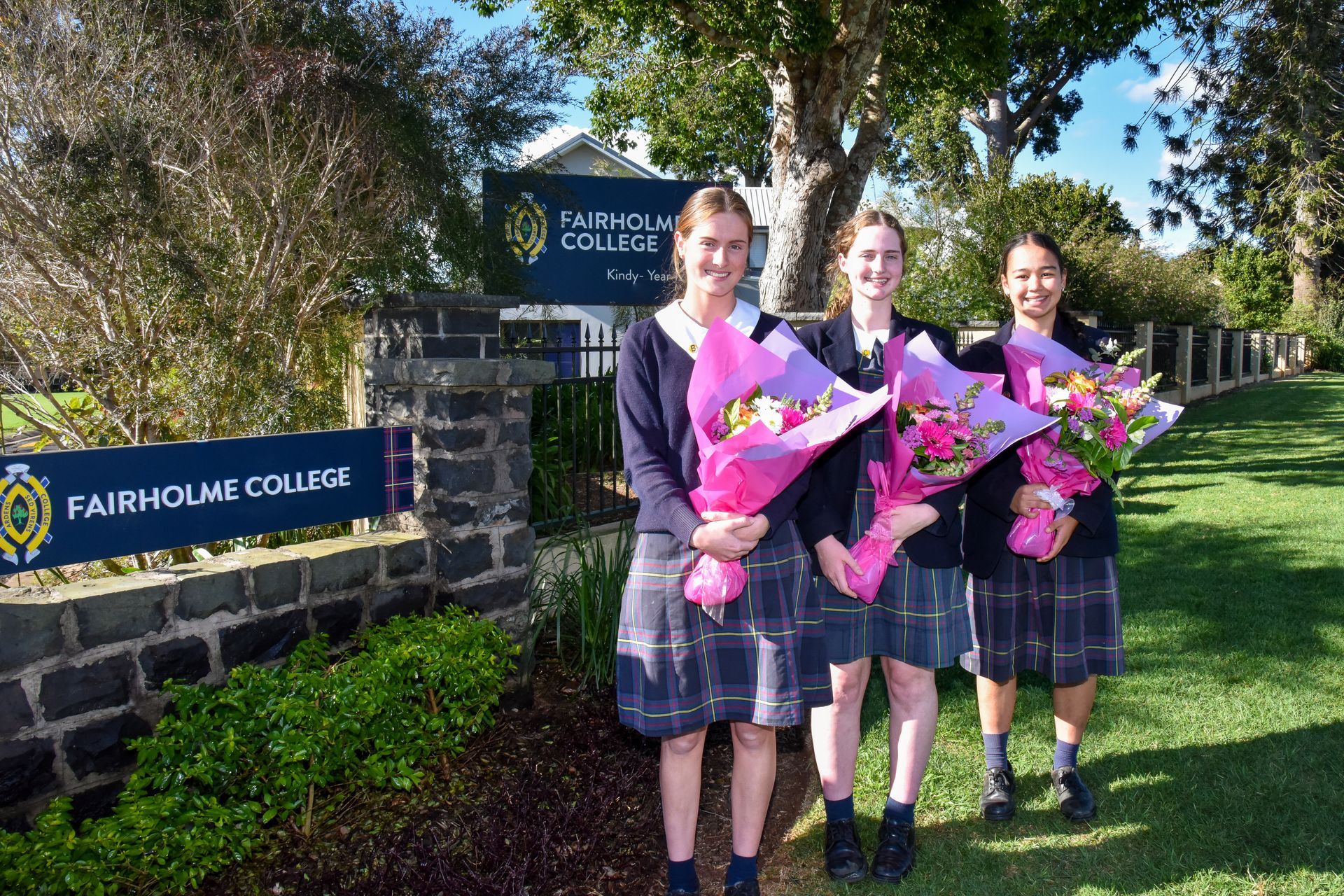
As we welcome a new year, 2026 Head Boarder Miranda Mann talks about her ambition for her time in the role, reflects on her formative years and looks to what the future holds beyond the tartan. Miranda represents the sixth-generation of cattle graziers from Hillgrove Station, north of Charters Towers. With a deep connection to the land and a heart full of compassion, Miranda brings a grounded, inclusive, and community-focused ideal to the Head Boarder role in 2026. Beginning at Fairholme in Year 7, when she first arrived from her family’s historic Brahman cattle station, established in 1861, before the founding of Townsville. The transition from rural life to boarding school was significant, but it was the unwavering support of her fellow boarders and the dedicated boarding staff that helped her find her place. “An experience that has shaped me to who I am today is the support I received from fellow boarders and staff during tough times,” Miranda reflects. “It’s a great feeling when you know the people around you care for you and want you to succeed. That drives me to do the same for others, because the impact can be significant.” As Head Boarder, Miranda is most excited about working closely with students and staff throughout the year, especially during key events that bring the community together. “I want to make the most of my time left at Fairholme, it’s going to fly by,” she says. “My goal is to leave an everlasting impact by building a more connected and respectful boarding environment. I want every girl to feel comfortable and to enjoy the boarding space even more than they do now.” Miranda’s hope is that her leadership style is rooted in empathy and action. She encourages younger boarders to embrace every opportunity: “Get involved with others and join in on activities around the boarding house, even something as simple as a game of touch. It really makes the term more enjoyable and creates everlasting memories. And don’t be afraid to try new extracurriculars, even if you haven’t done them before.” With her strong sense of community, deep appreciation for her roots, and a genuine desire to uplift those around her, Miranda Mann is set to make 2026 a memorable and meaningful year for the Fairholme boarding family.
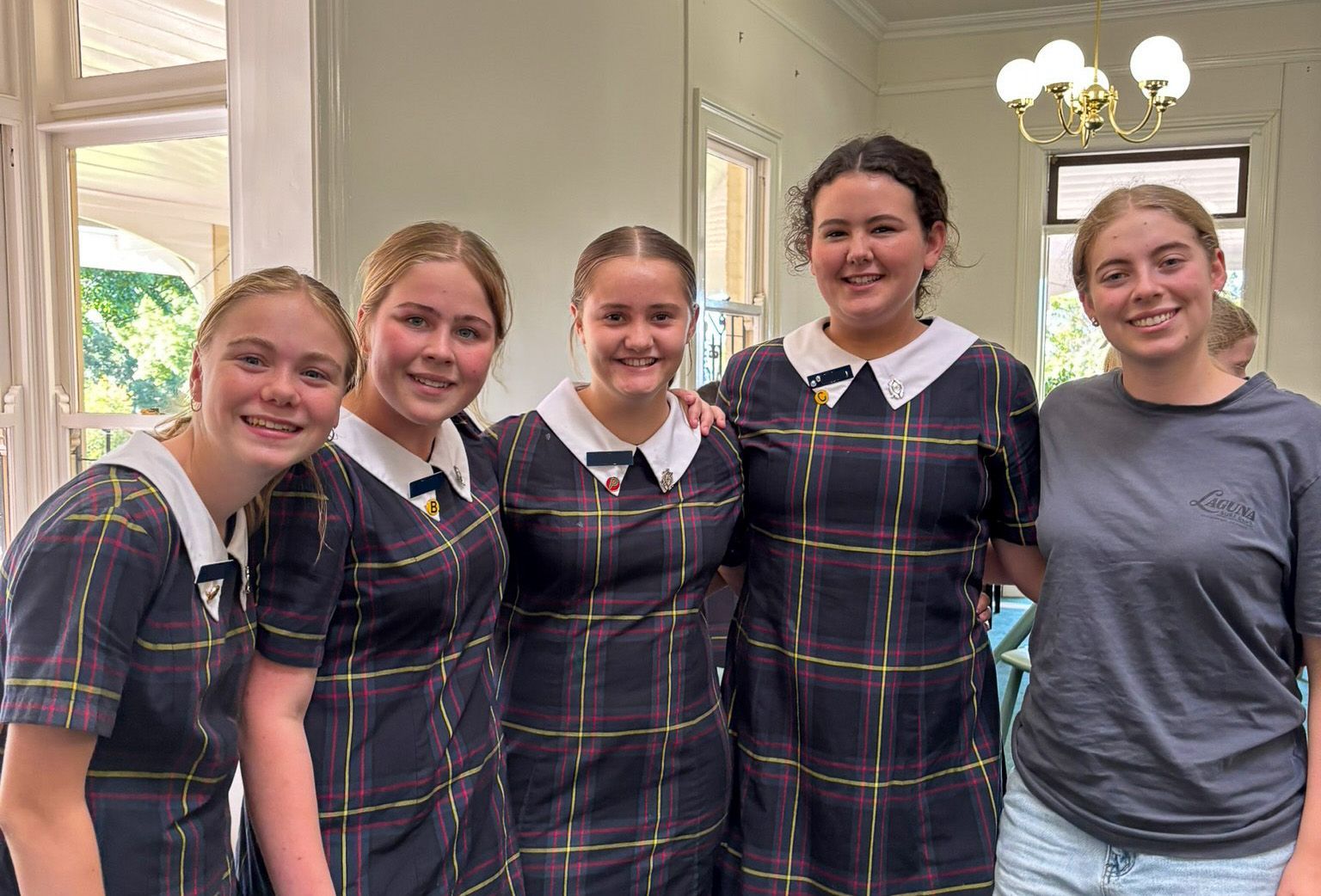
Friendship, connection, and a beautiful handover afternoon tea. At the beginning of this year, our Boarding Wellbeing Audit highlighted one message loud and clear: strong peer support is one of the most powerful influences on boarder wellbeing. In response, we set out with intention to strengthen and expand the ways our older girls walk beside and uplift our younger ones. In Term 2, we introduced our Middle Sisters program: a group of dedicated Year 11 Boarders who stepped in to support our Year 7s as the Year 12 academic demands increased. Over the past three terms, the Year 7s and Year 11s have shared plenty of laughs, chats, and practical support, building bonds that have enriched daily boarding life. Wanting our Year 8s to experience the same connection, we extended the initiative to include Year 10 Boarders who were interested to take on a similar role. This group has done a wonderful job running relaxed, group-style mentoring over shared dinners—something the Year 8s have thoroughly enjoyed. A big thank you to Year 11 Boarder, Bella Quinn, who has taken the lead in organising our next group of peer mentors. She has brought together our current Year 9s, who will step into mentoring roles in 2026, supporting today’s Year 7s as they move into Year 8, continuing the cycle of connection and care. Bella hosted a lovely afternoon tea to mark the handover. It was a chance for our Year 11 Middle Sisters to introduce their Year 7s to the new Year 9 mentors who will walk alongside them next year. The Cameron Room was filled with chatter, laughter and the beginnings of friendships that will carry through many years of boarding life. It was a reminder of what makes our community so special: girls supporting girls, encouraging one another, and finding strength in connection.
